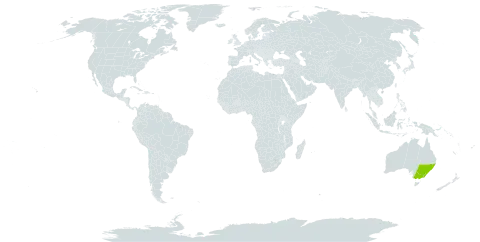Procumbent shrub to 0.15 m high, proliferating from rhizomes. Branchlets terete, with leaf bases not decurrent, not glandular-verrucose, pubescent to hirsute with simple hairs. Leaves trifoliolate; petiole 2–4 mm long; central leaflet lanceolate or linear, 4–5 (–10) mm long, 1.5–1.9 mm wide, entire, recurved at margins (more prominently when dried), rounded to acute, not glandular-verrucose, hirsute; midrib not glandular-verrucose, hirsute; secondary venation obscure. Inflorescences longer than leaves, 1–3-flowered. Sepals 1.4–1.8 mm long, hirsute or glabrous. Petals imbricate, 4–6 mm long, creamy white to pale pink, pubescent adaxially. Filaments glandular-verrucose apically, dilated basally. Cocci commonly apiculate, hirsute.
